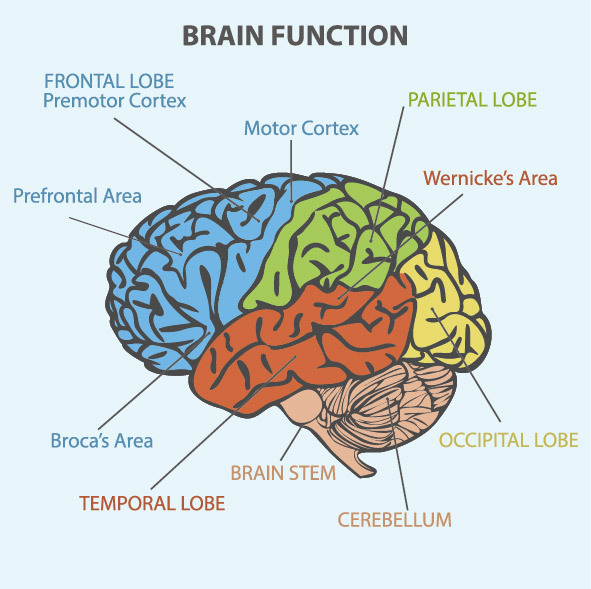The brain is made up of the cerebrum, cerebellum and brainstem. The brain consists of areas of grey matter and areas of white matter. Grey matter is mainly made up of the cell bodies of neurons whereas white matter is mostly made up of the bundled myelinated axons of neurons (myelin is white).
The cerebrum is the largest part of the brain and is divided into two connected cerebral hemispheres. In general, the right hemisphere relays messages to and receives messages from the left side of the body. The left hemisphere provides the same functions for the right side of the body. Each hemisphere is divided into 4 lobes: frontal, parietal, temporal and occipital. Please click on the link to learn about the key roles of the lobes of the brain.
The brainstem connects the cerebrum and cerebellum with the spinal cord. It has three parts: midbrain, pons and medulla. In addition to containing nerve pathways to and from the rest of the brain, the brainstem has centres controlling breathing, circulation, heart rate, and wakefulness/sleep.
The brain and spinal cord make up the central nervous system (CNS) which links to the peripheral nervous system (PNS). The PNS consists of nerve pathways outwith the CNS which relay information to and from the rest of the body (e.g. muscles, organs, endocrine glands).
The whole nervous system works as a ‘closed loop’ system:
- The CNS receives information from the rest of the body via the PNS.
- The CNS integrates the information received.
- The CNS directs and coordinates the activity of all other parts of the body via the PNS.
